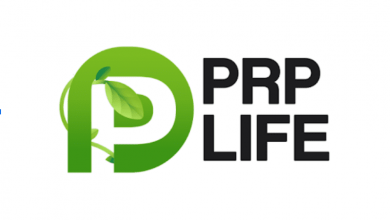Step-by-Step Storm Damage Cleanup: Safely Restoring Your Property After Natural Disasters

Introduction: Why Storm Damage Cleanup Requires a Systematic Approach
Storms strike with little warning, often leaving a trail of destruction in their wake. From fallen trees and damaged roofs to flooded basements and broken windows, the aftermath can be overwhelming. Whether it’s a hurricane, thunderstorm, or winter blizzard, storm damage cleanup is a critical step toward reclaiming the safety and functionality of your property.
Restoring your property doesn’t just involve removing debris; it requires a structured and safe plan, expert assessment, and often, professional help. In this comprehensive guide, we’ll walk you through every step—from the moment the storm passes to the full restoration of your home or business.
Step 1 – Ensure Immediate Safety and Prevent Further Harm
Assess for Structural Hazards First
Your safety should always come first. Before stepping outside or entering your property:
- Check for live electrical wires, gas leaks, or water damage in the vicinity of electrical systems.
- Avoid flooded areas until professionals confirm it’s safe.
- If you suspect a structural collapse (such as the roof or walls), evacuate and contact emergency services immediately.
According to the Federal Emergency Management Agency (FEMA), structural hazards are a leading cause of post-storm injuries.
Step 2 – Document the Damage for Insurance Claims
Before starting cleanup, take clear, time-stamped photographs and videos of all damage. This includes:
- Exterior: roof, windows, siding, gutters, fencing
- Interior: walls, ceilings, flooring, electronics, furniture
- Vehicles and outdoor equipment
Documentation will serve as critical evidence when submitting an insurance claim. For detailed guidance, refer to this Forbes article on disaster claims.
Step 3 – Contact Your Insurance Provider Immediately
Don’t delay this step. Report the incident and start the claim process as early as possible.
- Ask if an adjuster will visit your property.
- Inquire about authorized cleanup services or restoration companies.
- Save all receipts related to emergency repairs or temporary housing.
Early communication with your insurance company sets the tone for a smoother financial recovery.
Step 4 – Begin Emergency Repairs to Prevent Further Damage
Once it’s safe and you’ve documented the damage:
- Cover broken windows with tarps or boards.
- Place buckets under leaks and shut off water lines if needed.
- Remove debris blocking entryways or drainage systems.
Be cautious not to perform any major repairs before the adjuster has evaluated the site.
Step 5 – Hire Professional Storm Damage Cleanup Services
While DIY efforts can handle minor debris, larger cleanup tasks require professional expertise. Trained cleanup crews can:
- Remove downed trees and secure hazardous limbs
- Pump out water and dry flooded areas
- Dispose of contaminated items
- Identify hidden structural damage
Step 6 – Address Water Damage and Mold Risk Promptly
Flooding is often the most dangerous result of storm damage. It can ruin your foundation, damage wiring, and lead to mold growth within 24–48 hours.
Steps to Tackle Water Damage:
- Use wet vacuums, dehumidifiers, and fans to quickly dry areas.
- Remove soaked drywall and insulation.
- Disinfect surfaces with antifungal solutions.
The Centers for Disease Control and Prevention (CDC) warns that mold poses serious respiratory risks if not removed correctly.
Step 7 – Sort, Salvage, and Dispose of Belongings
Go room by room and separate:
- Salvageable items: Electronics, documents, clothing (if dry and mold-free)
- Non-salvageable items: Mattresses, upholstered furniture, carpeting, and food that may have been exposed to water
Check local guidelines for removing storm debris. Your municipality may offer special collection days or designated drop-off sites.
Step 8 – Conduct Electrical and Plumbing Inspections
Storms can wreak havoc on home systems. Do not attempt DIY electrical work after flooding or lightning strikes.
Hire licensed professionals to inspect:
- Wiring and breaker panels
- HVAC systems
- Water heaters and gas lines
- Plumbing integrity (especially if roots or shifting ground may have caused breaks)
Step 9 – Plan Long-Term Structural Repairs
Once your property is cleaned and dried:
- Schedule roofing repairs or replacement
- Repair siding, windows, fences, and gutters
- Replace damaged drywall, flooring, and insulation
You can use a storm damage repair checklist to stay organized throughout the rebuild phase. Incorporate storm-resistant materials where possible, such as impact windows or hurricane straps.
For further insight, check out our internal guide: Choosing the Right Water Damage Company
Step 10 – Invest in Preventive Measures for Future Storms
Preparation is key to minimizing future damage:
- Install sump pumps and battery backups
- Reinforce garage doors and roofing
- Trim trees and clear gutters regularly
- Create an emergency plan with evacuation routes and emergency contacts
Conclusion: Recover with Confidence Using a Structured Cleanup Plan
Storms can be traumatic, but with the right knowledge and resources, the road to recovery is clear. Effective storm damage cleanup goes beyond debris removal. It involves safety, planning, professional support, and preparation for the future.
By following this step-by-step guide, you’re not just restoring property—you’re restoring peace of mind and long-term safety for your family or business. Partner with trusted restoration experts, stay informed, and take control of your recovery journey today.

Source: Step-by-Step Storm Damage Cleanup: Safely Restoring Your Property After Natural Disasters


